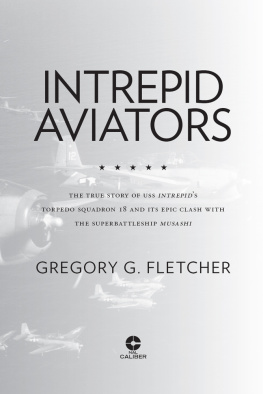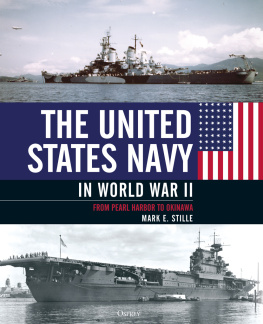THE BATTLE
FOR
LEYTE, 1944
This book has been brought to publication
with the generous assistance of
the United States Naval Academy Class of 1945.
THE BATTLE
FOR
LEYTE, 1944
Allied and Japanese Plans,
Preparations, and Execution
MILAN VEGO
Naval Institute Press
Annapolis, Maryland
Naval Institute Press
291 Wood Road
Annapolis, MD 21402
2006 by Milan Vego
All rights reserved. No part of this book may be reproduced or utilized in any form or by any means, electronic or mechanical, including photocopying and recording, or by any information storage and retrieval system, without permission in writing from the publisher.
Library of Congress Cataloging-in-Publication Data
Vego, Milan N.
The Battle for Leyte, 1944 : allied and Japanese plans, preparations, and execution / Milan Vego.
p. cm.
Includes bibliographical references and index.
ISBN 978-1-6125-1171-9
1. Leyte Gulf, Battle of, Philippines, 1944. 2. World War, 1939-1945CampaignsPhilippinesLeyte Island. 3. Strategy. 4. Pacific OceanStrategic aspects. 5. Leyte Island (Philippines)--History, Military. I. Title.
D767.4.V44 2005
940.54'25995--dc22
2005026338
13 12 11 10 09 08 07 06 9 8 7 6 5 4 3 2
To Mr. Edward S. Miller
for his extraordinary generosity
and for making this book possible
Contents
The Leyte operation was one of the largest and most complex combined operations conducted in World War II. It represented the first Allied effort to open a new campaign in the Pacific by penetrating and then seizing a large island in the very center of the enemys geostrategic defense position. The success of the landing at Leyte was critical to mounting an assault on Luzon and liberating the rest of the Philippines.
The Leyte operation is an umbrella term for two principal multinational (combined) major operationsthe initial landings and the battle ashore, and the successive major operation to secure Leyteas well as several supporting major operations at sea and in the air. It involved huge forces on both sides. The main landing on 20 October 1944 and the naval battles that ensued were only the beginning of a protracted struggle for control of the island and its approaches. Leyte was not secured until the end of December 1944.
Efforts to deny the Allies control of the island severely depleted Japanese air and naval strength. This, in turn, had a decisive impact on Japans ability to defeat the Allied landings on Luzon in February 1945 and subsequent landings aimed at securing the rest of the Philippine archipelago. The series of battles and engagements fought on 2427 October 1944 broke the back of the Imperial Japanese Navy (IJN). Afterward, it never again represented a serious threat to the U.S. Navys control of the western Pacific.
Numerous books, essays, and articles have been written on the Battle for Leyte. There are also a large number of official histories that describe and analyze the Leyte operation but largely in terms of the planning and employment of a particular service. Most works published so far are a narrative of the naval battles fought on 2427 October. Except for some official and semiofficial histories, the works on the Battle for Leyte explain the events from a tactical rather than an operational perspective. Few published works describe in detail and critically evaluate the planning, preparations, and execution of the Leyte operation in all three mediumson land, at sea, and in the airby both sides.
The main reason to embark on this project is to present both the narrative and analysis of the Leyte operation from the operational level of war. Therefore, the authors focus was to describe and analyze plans, preparations and execution of the Leyte operation. Another reason for writing this study is to illustrate one of several ways operational warfare theory can be used in analyzing a historical case study and, based on a conclusion, draw some lessons for the future.
The planning, preparation, and execution of the Leyte operation on both sides were extremely complex. This operation, conducted by multi-service forces, illustrates as no other case study can all the aspects of operational warfare at sea, on land, and in the air. The operation also showed the intricate web of relationships among policy, strategy, operational art, and tactics. It demonstrated how the decisions made by tactical commanders can have momentous impact on the course of events across all levels of war, from the tactical all the way up to strategic.
The focus here is mostly, although not exclusively, on the operational and some strategic aspects, rather than tactical events of the Leyte operation. However, certain tactical decisions and plans on both sides that dealt with naval aspects of the operation were given more attention and are described in some detail because of the importance of major naval battles fought on 2427 October 1944.
Any campaign or major operation is normally planned, prepared, and executed as part of the larger design framed by strategy and policy. Afterward, the operational framework determines the decisions and actions on the part of the respective operational and tactical commanders. The tactical actions can contribute to the ultimate objective determined by strategy and policy only if they are part of larger design determined by operational art; otherwise they are not only useless but can also have fatal consequences. In numerous published works on the various aspects of the Leyte operation, little attention was given to supposedly dry and uninteresting details pertaining to the command organization, intelligence, logistics, and protection. What preceded the actual clash of forces must be examined to determine the causes of ones victories and defeats.
The information available to commanders on both sides is key for understanding the planning assumptions and operational and tactical decisions made. For example, some key information obtained by the Allied Magic intercepts (a subset of Ultra) might shed light on certain decisions made or not made by the Allied major commanders during the planning, preparation, and execution of the Leyte operation; otherwise the reasons why these decisions were made cannot be properly understood. The focus here is not on details of battles and engagements (they are described in some detail in the works of many fine authors) but in explaining the elements of the decisions made by the operational and major tactical commanders and their consequences. The sheer scope and complexity of the Leyte operation made it necessary to describe and analyze the most critical decisions and events. To write a complete history of the operation would require much larger effort and far more space.
The organization of the work presented some difficulties because of the sheer complexity of the Leyte operation. The operation can be explained and analyzed either chronologically or by focusing on only some of its aspects. Either approach has both advantages as well as disadvantages. The solution adopted here is to organize the work around certain components or aspects of operational warfare as applied in the Leyte operation, followed by the chronological description and analysis of the main events on land, at sea, and in the air. This approach might disappoint some readers, but it was the best approach given the nature and complexity of the subject.
History is of little use if read in a vacuum. Military and naval history should be more than just narrative history, more than description and analysis of events in an isolated context. What use is history unless it offers lessons that can be put to good use now and in the future? Despite the passage of time, the Leyte operation offers a number of valuable lessons to todays professional officerslessons in developing tactical and operational concepts, modifying or altering doctrine and training, force planning, and designing new weapons and equipment.
Next page








